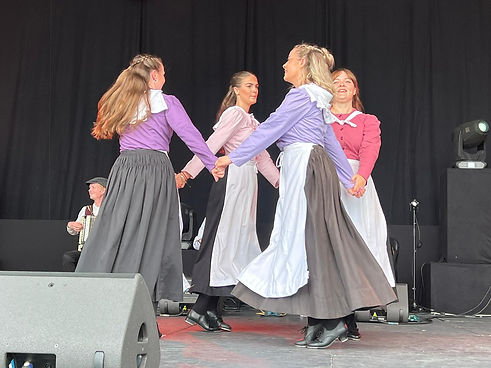Cornish dance
There are many different aspects of Cornish dance. Below is some further information on the aspects of the tradition which Kekezza perform. This information is taken from an-daras.com where you can find more information about the tradition.

Scoot (step/percussive) dance
In the 19th century step dancers took full advantage of the satisfying sound of hard soled footwear needed for the mining and quarrying industries. This sound was enhanced further when metal plates were added to the toes and heels to increase the life span of the footwear. In Cornish dialect these metal plates were called "scoots" and this term eventually transferred itself to the dance tradition itself so that the distinctive style of Cornish step dancing is called "scoot dancing". Scoot dancing is a conversation between the dance and the musician.
Social dance
Social folk dance in Cornwall draws upon all aspects of Cornish dance together with new inspirations and influences. Dances listed for the May Festivities at Looe in the late 19th century range from step dances to a Cornish version of the Triumph. With the growing popularity of Cornish dancing for weddings and party time generally many new dances have been written inspired by both tradition and links to other Celtic nations.


Feast day/Furry dances
Furry dances are essentially processional dances for couples travelling around the town or village to celebrate a feast day or special event. The Helston Furry is world famous but many parts of Cornwall have their own dance.
Serpent dances and the Snail Creep are another feast day dance associated with the Tea Treat Traditions.


